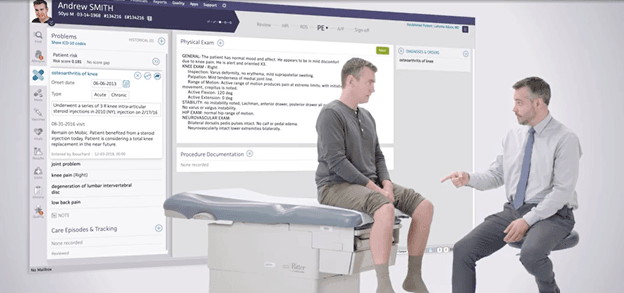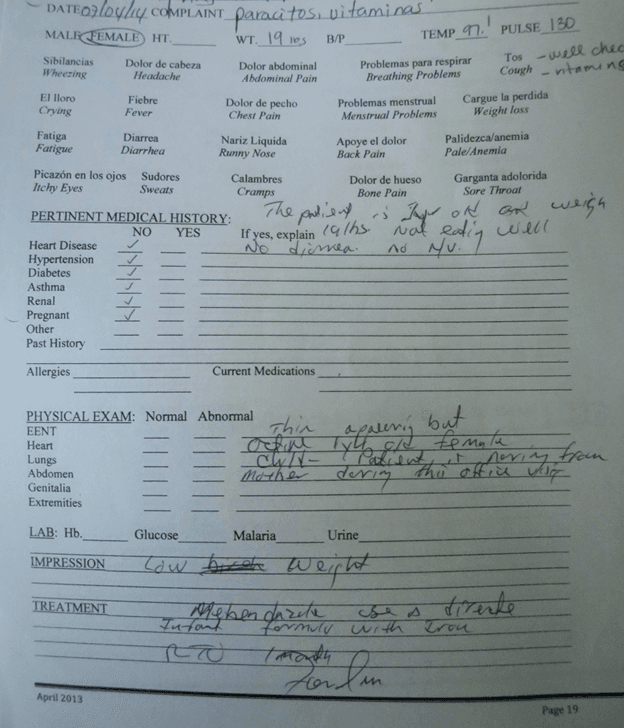Business News Daily provides resources, advice and product reviews to drive business growth. Our mission is to equip business owners with the knowledge and confidence to make informed decisions. As part of that, we recommend products and services for their success.
We collaborate with business-to-business vendors, connecting them with potential buyers. In some cases, we earn commissions when sales are made through our referrals. These financial relationships support our content but do not dictate our recommendations. Our editorial team independently evaluates products based on thousands of hours of research. We are committed to providing trustworthy advice for businesses. Learn more about our full process and see who our partners are here.
What is the Importance of Patient Charts?
This record of a patient’s medical history is an important part of clinical data.

Table of Contents
In a way, patient charts are the crux of the medical industry. They substantially increase the likelihood of positive patient outcomes and they give medical professionals the general patient profiles needed to develop meaningful treatment plans.
Virtually every reputable medical practitioner uses patient charts to guide their clinical decision-making. Read on to learn why patient charts matter and how you can use them.
What is a patient medical chart?
A patient medical chart, commonly referred to as a patient chart, is a complete and total record of a patient’s clinical data and medical history. Typically, patient charts include vitals, medications, treatment plans, allergies, immunizations, test results, patient demographics, diagnoses, progress notes and reports. All information in patient charts comes from nurses, lab technicians, physicians and other practitioners involved in the patient’s care.
The importance of patient charts
Proper patient care involves addressing a patient’s symptoms in the context of the big picture. Patient charts are that big picture. The comprehensive patient data they provide gives you all the information you need to make proper diagnoses, prescribe appropriate medications, order appropriate blood work and set up robust treatment plans. Without patient charts, even highly experienced doctors can misdiagnose patients or set up treatment plans that yield no results.
Additionally, medical billers and coders rely on the information in patients’ charts to generate medical claims. These claims are then submitted to payers, such as insurance companies for practices to collect the money they are owed for services rendered. Without a comprehensive medical chart, medical billers can’t do their job effectively.
What information is included in a patient chart?
A typical patient chart includes the following information:
- Demographics: This data is important to have since a patient’s race and gender can predispose them to certain conditions.
- Medications: When you know which medications a patient is taking, you’ll know whether you should increase or decrease their dosages. You’ll also have an easier time deciding whether additional medications are needed.
- Allergies: Prescribing medications to which a patient is allergic is a bad choice. However, if you don’t know the patient’s allergies, you could make this mistake easily.
- Family history: This information matters since seemingly innocuous symptoms or lab results can indicate the earliest phases of a condition common in the patient’s bloodline.
- Medical history: Knowing when a patient last saw primary care physicians and specialists gives you a timeline that’s key to determining which treatments have and haven’t worked.
- Immunizations: You can likely rule out certain illnesses as causes of a patient’s symptoms if the patient is vaccinated against the pathogen or otherwise immune.
- Surgical history: If a patient has had a certain type of surgery in the past, then perhaps some of their current symptoms pertain to unexpected consequences from that surgery.
- Lifestyle: Knowing a patient’s lifestyle factors, such as smoking, occupation, alcohol use and exercise level, can help you make more accurate diagnoses.
- Developmental history: Especially in pediatrics, motor skill disorders and learning disabilities could tie into a patient’s current symptoms.
- Pregnancies (if applicable): Pregnant patients may be unable to take certain medications and some symptoms are more common in the weeks and months after pregnancy.
What should be added to a patient chart during encounters?
During each patient encounter, practitioners should add the following to the patient’s chart:
- Reason for visit: Simply describe the patient’s symptoms and other complaints.
- Present diagnoses: Indicate whether the patient is visiting you after a recent diagnosis or is showing up with brand-new complaints.
- Physical exam notes: Record any exams you performed and what you observed during those exams. You should also record the patient’s vitals.
- Treatment plan: If you’ve given the patient a diagnosis, record it. The same goes for if you’ve started the patient on a treatment plan. List every part of your plan in as much detail as possible.
- Lab and test orders: Note any labs and other tests, such as X-rays and MRIs, which are part of the treatment plan.
- Lab and test results: If you ordered labs and tests for the patient before your current encounter, list the results here and explain what they could mean.
- Prescriptions: Record the names and dosages of any medications you’ve given the patient as part of their treatment plan. Be sure to indicate how many times per day the patient should take their medication.
- Progress notes: Describe how well the patient is responding to their treatment plan and what remaining steps you expect will be needed to relieve the patient’s symptoms. If your current encounter is the patient’s first time expressing these complaints, note that instead.
Example of a patient chart
Patient charts vary in appearance based on the electronic health record (EHR) system ― also known as an electronic medical record (EMR) system ― that your practice uses. Below is an example of what patient charts look like in athenahealth’s EMR system.

Source: athenahealth
Digital charts like these can usually be customized by healthcare providers to suit their preferences. Most EMR systems also offer the ability to create templates and favorites lists, making it easier to navigate to frequently used tools, diagnoses, prescriptions and lab orders. Healthcare providers can also send these charts securely to other healthcare providers when needed, cluing in a patient’s other care teams on relevant information your practice might have uncovered during their last visit.
Meanwhile, a paper chart might look like this:

Source: MedicalServiceTrip.com
Medical professionals highly encourage EMR use over paper charts. The Centers for Medicare & Medicaid Studies previously offered incentives to encourage adoption. However, organizations that fail to meaningfully implement highly-rated medical software now face penalties on their Medicare and Medicaid reimbursements.
Who has access to patient medical charts?
Patients can access their charts via the patient portal as can any nurses, lab technicians, physicians and other medical personnel involved in their care. However, the chart ultimately belongs to the patient, even if it’s stored in your EMR, as patient charts contain sensitive patient information. Thus, patients can demand their medical records from you at any time or grant access to anyone they desire. They can also demand that you rectify any inaccuracies.
EMRs: Digital patient medical charts
By definition, EMRs are digitized versions of traditional patient medical charts. These digitized versions make the information in a patient chart significantly easier for all your medical staff to access quickly. Instead of rifling through paper records, you can load your EMR on your computer or phone, open your medical software platform and then access your patient charts.
EMR patient charts are also better for comprehensive care as everyone involved in the patient’s care can add their encounter notes to the same digital document. Then, when the next medical professional encounters the patient, they’ll have all the information they need, ordered chronologically, to care for the patient properly. The result is a more thorough, streamlined care experience for patients and providers alike.
Technically, “EMR” describes solely digital patient charts, whereas “EHR” — with which the term “EMR” is often used interchangeably — describes EMR and additional tools for improving patient care and communicating with other healthcare providers. These tools include electronic prescribing and lab ordering as well as telehealth technology and interoperability measures for communications with specialists and physicians outside your practice.
In short, EMR includes solely patient charts and EHR makes EMR easier for practices to work with. To learn more, read the Business News Daily guide to EMR vs. EHR.
Patient charts: the core of great medicine
With thorough, well-maintained charts, you give yourself all the information you need to treat your patients properly. There’s no understating the importance of patient charts for practices of all sizes — and how much easier charts are to manage with medical software. When you build out a robust infrastructure for creating, storing and organizing patient charts, you unlock your practice’s full potential.










